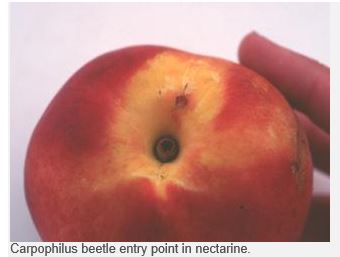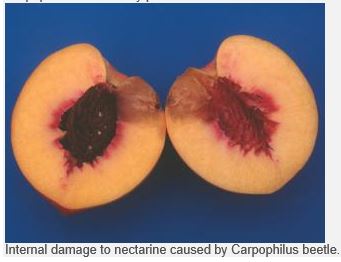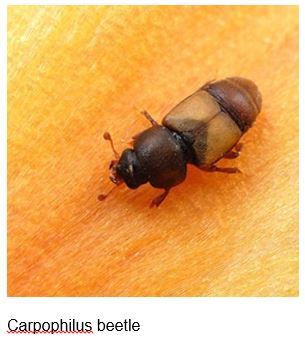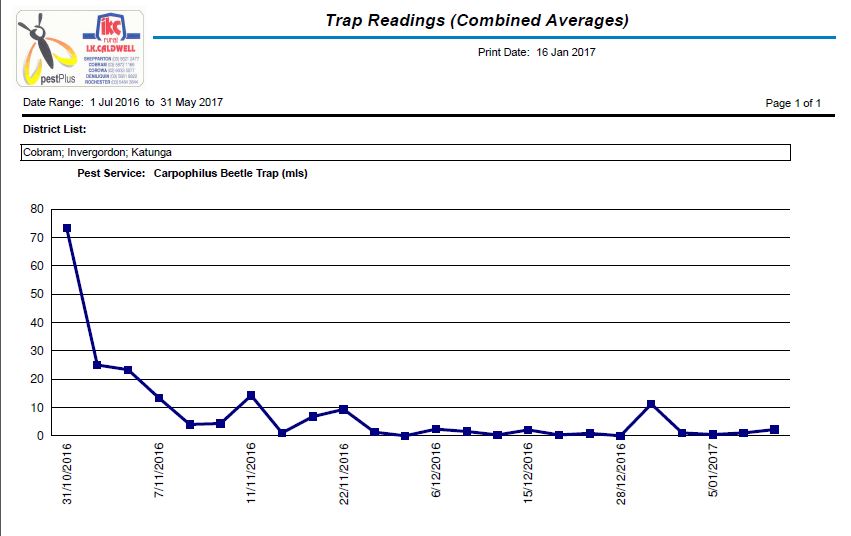The wet winter and spring this season resulted in conditions for Carpophilus beetle to breed up, together with split-stone and cracks and split fruit resulted in ideal conditions and a high population that we are now seeing in orchards.
Management
Poor orchard hygiene (i.e. fruit left on and under trees) and poor hygiene around packing sheds is a major cause of the beetle surviving and increasing in early spring, to the point where the beetle is a major pest by early summer.
Fallen fruit should be destroyed. Sweeping fruit from under drip lines and mulching is an option, especially fruit under trees. This has the effect of breaking the life cycle of the beetle.
There is a wide variation in susceptibility of different stone fruit varieties to Carpophilus,
The ‘Carpophilus Catcha Trapping System’ attract-and-kill traps are used to treat only the most susceptible fruit tree varieties. Carpophilus populations often tend to build up in the untreated, less-susceptible varieties and then migrate to ripening, more-susceptible varieties in neighbouring areas. This compromises the ability of attract-and-kill traps to control the pest in the treated orchards.
Work by Mofakhar S. Hossain et al demonstrated that 2 traps per ha gave good results when large areas were treated instead of just susceptible varieties.
We have found though the key to control is starting early. Putting the traps in the orchard in September traps beetles on warm days when they are active. As with all pest control keeping the population low and trying to prevent the population from increasing is the key to control.
Even though the system is not a perfect solution to the beetle problem, starting early can markedly delay the need to start using foliar insecticides.
Overall control over season is better, and there is a likelihood of less mites and mite flare from insecticides used for control of beetle.
Traps can be used for monitoring. At one trap per 5 ha will give an indication of the population size and the activity of the beetle. The traps need regular servicing each week, this is critical to have the traps at optimum attraction to compete against ripening fruit. For monitoring and servicing the traps, I K Caldwell offer a service to install and maintain the traps over the season.
Fruit and beetle need to be monitored as the fruit approaches maturity and becomes susceptible to attack. Sprays are applied to cover the fruit and foliage before the beetles can reach damaging levels. Decisions to respray trees should be based on monitoring and label recommendations. Insecticides do not give long-term protection against the adult beetles that can migrate into the area.
Life cycle
Adult beetles lay their eggs in rotting or damaged fruit. The larvae emerge from the fruit and enter the soil where they pupate. Adults emerge from the ground and attack ripening fruit. The life cycle takes only a month in summer so there are several generations in a year.
The adults are strong fliers and can travel between orchards. They prefer summer rainfall and abundance of rotting fruit.
If no hosts are available they overwinter in cracks in the tree, under bark or in mummified fruit.
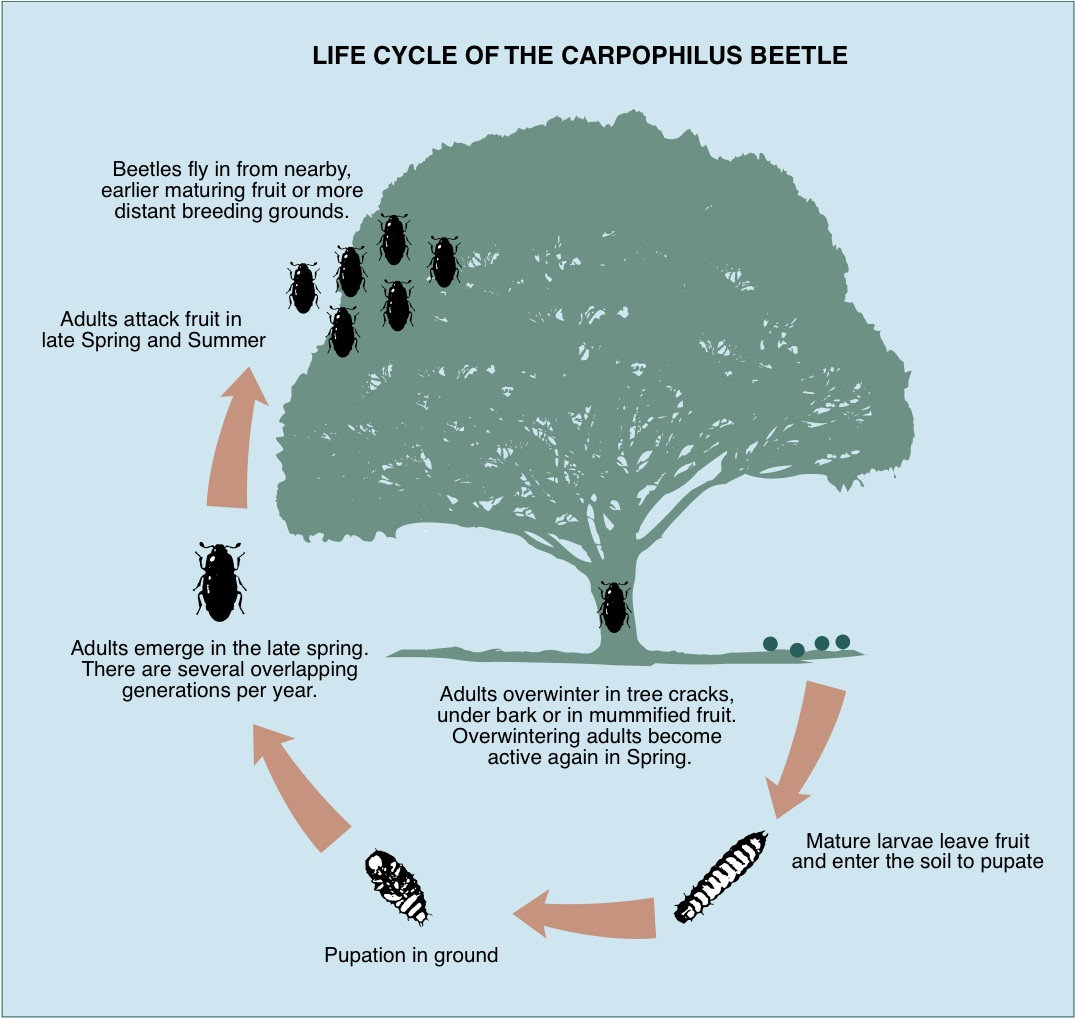
Damage
Most commercial feeding damage is done to ripening stone fruit. Stone fruit can be attacked on the tree, beetles burrow into the fruit, particularly near the stem end suture line. They also enter through splits and mechanical damage. In other fruits such as citrus, apples and figs, only fallen fruit is attacked.
Trap catches this current season, showing a spike in numbers initiating control strategies.
While numbers do appear low, the Carpophilus Beetle are measured in mls where 5 ml is approximately 1000 Beetle. * 70 ml is equivalent to 14,000 beetles.
These counts are quite low for the region where 10,000 beetles or more are often caught each week.

